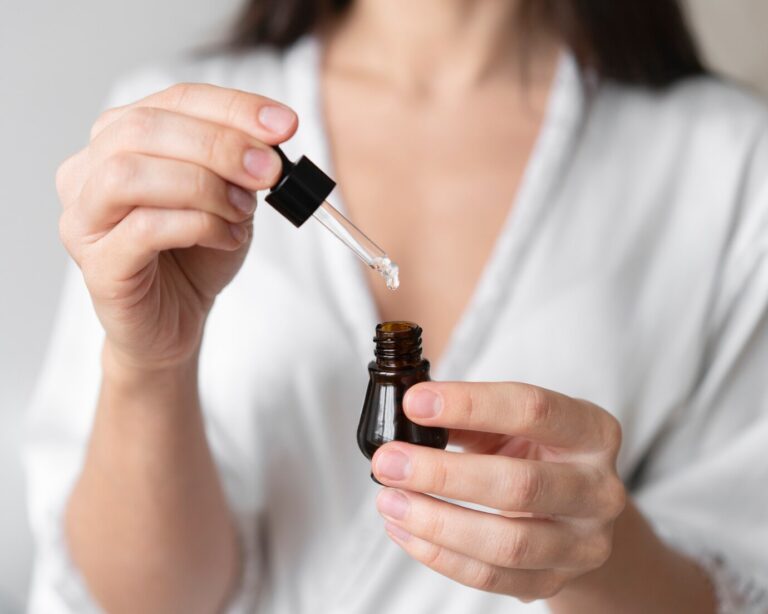CBD Patches for Transdermal Pain Relief: Your 10 Most Pressing Questions Answered
Introduction to CBD Patches
CBD patches are a novel method of delivering cannabidiol (CBD) directly into the bloodstream through the skin. This transdermal delivery system allows for a more consistent and controlled release of CBD compared to traditional methods such as oils, tinctures, or edibles. Unlike these other forms, which can vary significantly in bioavailability and onset of effects, CBD patches are designed to provide a steady dose over an extended period, typically ranging from 8 to 48 hours. This can be particularly beneficial for individuals seeking sustained pain relief, as fluctuations in pain levels can be managed more effectively.
The mechanism behind CBD patches involves the active compounds being absorbed into the dermal layers of the skin, bypassing the digestive system and liver metabolism. This method not only enhances the bioavailability of CBD but also minimizes the degradation of the compound that can occur in the gastrointestinal tract. Furthermore, the continuous delivery of CBD through patches can help maintain stable plasma levels of the compound, providing a more effective way to manage chronic pain conditions.
There are several advantages to using CBD patches over other forms of CBD. For one, the discrete nature of patches allows them to be worn throughout the day without drawing attention, making them convenient for users who are often on the go. Additionally, since they do not require ingestion, there is no need to worry about the difficulties individuals may face when swallowing pills or measuring doses. This could make CBD patches an appealing option for those who may have aversions to the taste or consistency of oils or edibles, further broadening their accessibility for pain management.
Understanding Transdermal Delivery Systems
Transdermal delivery systems are advanced therapeutic methods designed to administer substances through the skin, ensuring that they enter the bloodstream efficiently. This technique leverages the skin’s unique properties, acting as both a barrier and a facilitator of substance absorption. When it comes to delivering cannabinoids, such as those found in CBD patches, this method offers pivotal advantages over traditional oral consumption.
The science behind skin absorption involves the interaction of various factors, including the specific anatomy of the skin, the molecular size of the cannabinoids, and the use of permeation enhancers. The outermost layer of the skin, called the stratum corneum, is crucial in determining how effectively substances can penetrate. CBD patches are designed with formulations that allow for optimal penetration, ensuring that cannabinoids can bypass the digestive system, which often reduces bioavailability. By avoiding hepatic first-pass metabolism, CBD can reach systemic circulation more effectively, allowing for a more reliable dosage.
One of the primary benefits of using CBD patches is the steady release of cannabinoids over time. Unlike oral methods, where the effects can be erratic and influenced by food intake or metabolic rate, transdermal systems promote a consistent absorption profile. This controlled release enables users to experience prolonged effects without the peaks and troughs often associated with other consumption methods.
Additionally, the convenience of applying a patch, which can be placed almost anywhere on the body, encourages adherence to dosing regimens. Given these benefits, CBD patches represent a viable option for those seeking transdermal pain relief, allowing individuals to manage discomfort effectively while minimizing potential gastrointestinal side effects often experienced with oral consumption. The growing interest in this delivery method points to its potential to revolutionize cannabinoid therapy.
Benefits of Using CBD Patches for Pain Relief

The utilization of CBD patches for pain relief has gained significant attention due to their unique and convenient method of delivery. One substantial advantage of these transdermal patches is their ease of use. Unlike traditional oral methods such as pills or oils, CBD patches can simply be applied to the skin, allowing individuals to seamlessly incorporate them into their daily routines without any complexities. This ease of application makes CBD patches a favorable choice for those seeking relief without the hassle of dosage measurements.
Another key benefit of CBD patches is the provision of continuous relief. Once applied, the patches release CBD gradually into the bloodstream over an extended period. This slow-release mechanism helps to maintain a steady level of the cannabinoid in the body, which can lead to more continuous and consistent alleviation of pain. For individuals suffering from chronic pain conditions, this characteristic can significantly enhance their quality of life, allowing them to engage in daily activities with reduced discomfort.
Moreover, CBD patches offer targeted application, which can be particularly advantageous for localized pain. For instance, individuals suffering from arthritis may opt to place a CBD patch directly over the affected joint, providing direct relief to the area in need. This targeted approach not only maximizes the efficiency of the treatment but also minimizes the risk of side effects often associated with oral medications that affect the entire system.
Lastly, CBD patches are known for their long-lasting effects, often providing relief for up to 24 hours after a single application. This prolonged duration can be especially beneficial for those with busy lifestyles, as it reduces the need for frequent reapplication. Overall, the integration of CBD patches in pain management offers a compelling alternative, addressing various aspects of pain relief in a practical and effective manner.
Common Types of CBD Patches
CBD patches are increasingly recognized for their convenience and efficacy in delivering cannabidiol transdermally. Not only do they offer a discreet method of consumption, but they also allow for a sustained release of CBD over a prolonged period. Understanding the various types of CBD patches is essential for consumers looking to address specific needs effectively.
One primary categorization of CBD patches is based on strength. These patches are available in different dosage levels, typically ranging from 15 mg to 80 mg of CBD per patch. Users seeking mild relief may opt for lower strength patches, while those with chronic pain or intense discomfort might prefer stronger formulations to achieve optimal results.
Additionally, CBD patches can be classified based on the type of formulation used. The most common are full spectrum, broad spectrum, and CBD isolate patches. Full-spectrum patches contain not only CBD but also other cannabinoids and terpenes that may enhance the therapeutic effect due to the entourage effect. On the other hand, broad-spectrum patches contain multiple cannabinoids without THC, appealing to those concerned about its psychoactive properties. Isolate patches, containing only pure CBD, are ideal for users who wish to avoid other cannabinoids completely.
Another important aspect to consider is the special features of various CBD patches. Some patches may include additional ingredients aimed at enhancing their therapeutic effects, such as menthol for a cooling sensation or essential oils for aromatherapy benefits. Others might be designed for particular applications, such as patches specifically formulated for muscle recovery or anxiety relief. This diversity allows consumers to select the best option that aligns with their individual needs and preferences.
How to Use CBD Patches Effectively
Using CBD patches and cbd roll on for pain effectively requires careful consideration of the method of application and the conditions conducive to maximum absorption. The first step is to prepare the skin where the patch will be adhered. Start by choosing an area free from excess hair and moisture, as these factors can hinder the absorption of cannabinoids through the skin. It is recommended to clean the selected area with soap and water, followed by gently patting it dry. Avoid using lotions or oils on the skin prior to applying the patch, as these products may create a barrier that affects transdermal penetration.
When selecting the site for application, choose an area with relatively thin skin for optimal absorption, such as the inside of the wrist or the shoulder area. These areas have a higher density of capillaries, allowing the CBD to enter the bloodstream more efficiently. Once you have identified the ideal spot, remove the patch from its packaging carefully to avoid contamination. Apply the patch directly to the skin, pressing firmly for about 30 seconds to ensure proper adhesion.
The duration of use is also a crucial element in achieving desired results. Most CBD patches are designed to be worn continuously for a specified period, typically 8 to 12 hours, depending on the brand and concentration of CBD. It is crucial to follow the manufacturer’s guidelines for optimal usage. After the patch has been removed, it is advisable to check the skin for signs of irritation or an allergic reaction. It’s often beneficial to wait a few hours before applying another patch to allow the skin to recuperate and maintain effectiveness for subsequent applications. By adhering to these guidelines, users can effectively integrate CBD patches into their pain management routine.
Possible Side Effects and Considerations
As with any therapeutic product, the use of CBD patches may be accompanied by potential side effects and considerations that individuals should be aware of before utilizing them. First and foremost, while CBD is generally well-tolerated, some users have reported experiencing allergic reactions to the adhesive used in the patches or the CBD itself. Symptoms of an allergic reaction may include redness, itching, or a rash at the site of application. It is advisable for individuals to perform a patch test to check for any reactions, especially if they have a history of skin sensitivities.
In addition to potential allergic reactions, skin irritations can occur, particularly if the patch is worn for an extended period. Users may experience discomfort or irritation, which may necessitate a break from use. Observing the skin regularly while using CBD patches can help identify any negative reactions early. Furthermore, there are considerations regarding interactions with other medications. CBD may influence the effectiveness of certain pharmaceutical drugs by interacting with the cytochrome P450 enzyme system in the liver, which is pivotal in drug metabolism. Individuals taking medications such as blood thinners or any category of drugs metabolized through this pathway should consult with a healthcare provider prior to starting CBD treatment.
For those with specific health conditions, such as liver disease or those who are pregnant or breastfeeding, caution is warranted. Currently, research surrounding the safety of CBD use in these populations is limited. Consequently, individuals should seek guidance from a healthcare professional knowledgeable about CBD prior to initiating the use of CBD patches. This information is critical for users wanting to ensure that their approach to pain relief is both effective and safe.
Frequently Asked Questions about CBD Patches
As interest in CBD patches continues to grow, many individuals have questions about their use and effectiveness. Below are ten of the most frequently asked questions regarding these innovative products.
1. Do CBD patches get you high?
CBD patches do not produce a psychoactive effect. Unlike THC, another compound found in cannabis, CBD is non-intoxicating and does not create a “high.” Users can benefit from the therapeutic properties of CBD without experiencing altered states of consciousness.
2. How long do CBD patches take to work?
The onset of effects from CBD patches can vary depending on the individual and the dosage. Generally, users may begin to feel relief within 1 to 2 hours after application, as the transdermal delivery allows CBD to enter the bloodstream gradually.
3. Can I use CBD patches for chronic pain?
Many users have reported positive experiences using CBD patches for chronic pain management. The sustained release of CBD can provide prolonged relief, making them a suitable option for those dealing with persistent discomfort.
4. Are CBD patches safe to use?
CBD patches are generally considered safe for most individuals. They undergo rigorous testing for contaminants and are formulated to minimize potential irritants. However, those with specific allergies or skin sensitivities should consult a healthcare professional before use.
5. How long can I wear a CBD patch?
Most manufacturers recommend wearing a CBD patch for 8 to 12 hours for optimal effectiveness. It is advisable to follow the instructions provided by the specific product to ensure the best results without adverse reactions.
6. Can I combine CBD patches with other CBD products?
Yes, combining CBD patches with other forms of CBD, such as oils or edibles, can enhance the overall therapeutic effect. However, it is important to monitor your body’s response to avoid overconsumption.
7. Are CBD patches suitable for everyone?
While CBD patches are generally well-tolerated, individuals pregnant, breastfeeding, or taking prescribed medications should consult their healthcare provider before using them. Personal health conditions can affect how your body responds to CBD.
8. Will CBD patches affect my drug test results?
Most CBD patches are formulated to contain minimal THC, reducing the likelihood of affecting drug test outcomes. Nevertheless, it can be beneficial to choose CBD products that are third-party tested to ensure compliance with workplace regulations.
9. Can I apply CBD patches to any part of my body?
Yes, CBD patches can typically be applied to any hairless area of skin for best absorption. Common locations include the upper arm, thigh, or abdomen. Avoid applying to areas with open wounds or irritated skin.
10. Where can I purchase CBD patches?
CBD patches are available in various retail outlets, including health stores, pharmacies, and online retailers. It is crucial to choose reputable brands that provide lab testing results to ensure product quality.
These FAQs represent a growing interest in CBD patches, offering clarity about their application and benefits. The adaptability and effectiveness of CBD transdermal systems may provide relief to a diverse range of individuals struggling with different ailments.
Where to Buy Quality CBD Patches
Finding reliable and high-quality CBD patches is essential for achieving effective pain relief. As the popularity of these products increases, so does the number of available options, which can make the purchasing process somewhat overwhelming. To navigate this landscape, it is crucial to focus on a few key factors that will help determine the quality of the CBD patches you consider.
First and foremost, prioritize brands that conduct thorough lab testing on their products. Reputable companies will provide third-party lab results, which can usually be found on their websites. These results should detail the concentrations of cannabinoids and other active ingredients while also confirming that the patches are free of harmful contaminants such as heavy metals and pesticides. This transparency is critical, as it demonstrates the brand’s commitment to safety and efficacy.
Next, take the time to scrutinize the ingredients list of any CBD patch you are considering. High-quality products typically contain organic components and avoid harmful additives or fillers. Look for patches that use full-spectrum or broad-spectrum CBD, as they may offer enhanced benefits through the entourage effect, allowing various compounds in the cannabis plant to work synergistically.
Additionally, customer reviews can provide valuable insights into the effectiveness and reliability of different CBD patches. Examine feedback to gauge the experiences of others, particularly with respect to how well the patches worked for pain relief and any potential side effects. Reliable brands will often showcase testimonials from satisfied customers, while those with consistently negative reviews may warrant caution.
In conclusion, purchasing quality CBD patches involves careful consideration of product testing, ingredient integrity, and user feedback. By following these guidelines, you can make an informed choice, ensuring a better experience with your transdermal pain relief solution.
Conclusion: Is CBD the Right Choice for You?
As we have explored throughout this blog post, CBD patches offer a unique method of transdermal delivery for pain relief. These patches release cannabinoids steadily through the skin, which can be beneficial for individuals seeking a non-invasive method to alleviate discomfort associated with various conditions. Among the numerous benefits discussed, one of the most notable includes the potential for localized relief without the psychoactive effects commonly associated with cannabis. This makes CBD an appealing option for those wishing to avoid the mind-altering effects of THC while still seeking effective pain management solutions.
However, it is essential to consider various factors before incorporating CBD patches into your pain management routine. The effectiveness of CBD can vary significantly among individuals, influenced by factors such as body chemistry, the severity of the condition, and personal tolerance levels. While many users report positive outcomes, it is crucial to remember that scientific studies on the efficacy of CBD for pain relief are still emerging. Individuals may experience different results, and a method that works for one person may not be as effective for another.
Consulting a healthcare professional is highly recommended before starting any new treatment, including CBD patches. A licensed medical provider can discuss the potential benefits and risks based on your specific health needs. They can also help you determine whether CBD is a suitable choice for your situation, and if so, how to integrate it effectively into your existing pain management protocol. Ultimately, embracing holistic approaches to pain relief can lead to a more comprehensive strategy, combining traditional and alternative modalities. Careful consideration, alongside professional guidance, will empower you to make informed decisions regarding your health and well-being.







